Grandparenting is a wonderful reprisal of parenting—without all the worries and sleepless nights. As a new grandparent, you may find your life utterly transformed by joy, unconditional love, and a renewed sense of purpose. In return, your grandchild can find in you the unique companionship, acceptance, and connection that only a grandparent can give.
Some aspects of grandparenting will never change. Babies need to be fed, changed, nurtured, protected, and spoiled with love. But childrearing methods are always evolving, and those you used to raise your children a generation or two ago may no longer apply. We’ve compiled a compendium of the latest birth and baby-related norms and tips so you can begin your grandparenting journey without a hitch.
What Grandparents Should Know About the Birth of Their Grandchild
Child-birthing practices have changed over recent decades. New approaches have helped to make delivery a safer and more comfortable experience for the mother and to give the baby a healthier start in life. Even if you won’t be present in the delivery room when your grandchild is born, it helps to understand the parents’ choices, and what to expect and why.
Childbirth Classes

Childbirth classes teach parents about labor, delivery and postpartum care, usually over a series of weeks in the company of other expectant couples. You may be familiar with the Lamaze approach which was popularized in the 1960s and teaches breathing and other techniques to ease labor and delivery. Many other options are available today depending on the parents’ wishes, and include:
- The Bradley Method teaches labor and delivery with the father serving as the coach. Classroom topics also include prenatal nutrition and exercise, techniques for managing pain, how to avoid a cesarean birth, and postpartum care.
- The Alexander Technique teaches weekly lessons on posture and movement to help improve the mother’s freedom of movement, balance, flexibility and coordination during pregnancy and to aid in delivery and recovery.
- Birthing from Within prepares mothers to give birth with awareness, whether it’s done naturally or with medical intervention. Classes provide holistic education and support from pregnancy through birth and postpartum care
- HypnoBirthing and Hypnobabies teach self-hypnosis to help ease delivery. HypnoBirthing focuses on labor; Hypnobabies is more comprehensive, using medical-grade hypnosis to create a more comfortable pregnancy and birth process for both the expectant mother and her partner.
Grandparenting Safety Tips Video
Grandparenting is one of the greatest joys in life. Learn about some of the safety precautions you should take when a little one is staying in your home. From sleeping arrangements to baby monitors there are many precautions you should be aware of.
Birthing Suites, Birthing Centers, and Home Births
Hospitals are the most common place to give birth, and many now have home-like birthing suites where mother can labor, deliver and recover without having to be moved — and her newborn can stay in the room with her, too. Amenities usually include a private bathroom with shower, comfortable chairs, soft décor and a television.
But hospitals aren’t an expectant couple’s only option. Home births and birthing centers are increasingly popular with women who have low-risk pregnancies and want a more comfortable, personalized, natural delivery. Such births are attended to by a professional midwife who is certified to deliver babies independently, whether in a hospital, clinic, birthing center, or home.
The Caring Support of a Doula
In ancient Greece, a doula referred to a handmaiden or servant; in Western countries today, it refers to a nursing professional who offers education and caring support to women and their families during pregnancy, childbirth and post-delivery. Doulas help mothers make informed decisions about their child’s birth and facilitate communication with their medical providers. They are typically present for the entire labor, offering encouragement and helping to ease discomfort. After birth, a doula will offer hands-on guidance with the baby, help with breastfeeding, and emotional and practical support to help the family ease into life at home.
Doulas don’t perform any medical or clinical tasks, but their knowledge and caring presence can help a mother-to-be feel less anxious, and that can lead to a safer labor and birth and an easier transition into mothering, childcare, and family life.
Labor
As an experienced parent, you know the signs of labor, and you’re probably anticipating their onset as much as the parents-to-be. But what is the right time to head for the hospital?
Women who are giving birth in a hospital or birthing center are now advised to stay home in early labor. If they show up too soon — before active labor when contractions are less than 5 minutes apart, they’ll likely be sent back home. Plus, being in the comforting environment of home in labor’s early stages allows the hormones of birth to flow more naturally, which can help labor progress more efficiently later on.
Once active labor is underway, it’s common practice now to have one or more birthing partners present, whether a spouse, parent, best friend, or doula. In contrast to 50 years ago when most moms labored in the delivery room alone, birthing partners provide much-needed support, offering reassurance, back rubs and distractions, and cheerleading for mom through contractions.
Immediately After Delivery
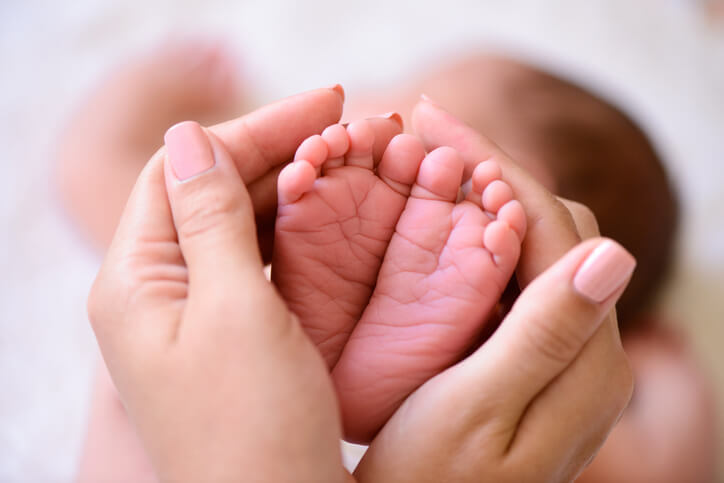
Whenever possible, experts recommend skin-to-skin contact between mother and baby for at least 1 to 2 hours immediately after birth; dad can stand in if mom can’t be there for medical or other reasons. Skin-to-skin contact helps ease babies’ transition from the security of the womb to the outside world. They cry less, and their body temperature, breathing, and heart rate stabilize more quickly, indications that they feel less pain and stress. They can find the breast more easily, which they instinctively know to do, helping to initiate breast-feeding.
Touch is also one of the strongest stimulators of oxytocin, the love hormone. In the hours immediately after birth, mother and baby experience their highest-ever levels of oxytocin, triggering an intense surge of love and presenting a once-in-a-lifetime bonding opportunity for baby and parents. To safeguard this sacred time, experts recommend that parents be alone with their baby for the first few hours. Even grandparents should be prepared for a waiting period before meeting their grandchild.
Regarding the all-important question of when to “cut the cord,” it was routine in the mid-20th century to clamp the cord immediately upon birth. However, in 2017, the World Health Organization recommended that clamping be delayed at least one minute after birth or better yet, until after the cord has ceased pulsating. This provides the baby with transition time from womb to world, and allows more blood to flow from the placenta to the baby. It may also increase the level of iron in the baby’s blood for up to six months, helping with healthy brain development.
Breastfeeding
When it comes to feeding the baby, breastfeeding is recommended exclusively for the baby’s first six months of life whenever possible. You may have raised your own babies on formula, and it’s a perfectly acceptable alternative, but breastfeeding is best for many reasons:
- Contains hormones and the right amount of protein, sugar, fat and most vitamins to help the baby grow and develop
- Has antibodies that fight off infection
- Includes fatty acids that may help the baby’s brain and eyes develop
- Is easy to digest
- Helps prevent the onset of allergies
- Keeps mother and baby close
- May help mother return to pre-pregnancy weight more quickly
- Is free and always available — no bottles or cleanup required
The mother may also breastfeed in front of you. Don’t be alarmed! It’s the natural thing to do.
What Grandparents Should Know About the Basic Routine of Their Grandchild
Life with a baby is filled with routines you’re familiar with—from bathing and feeding to burping and putting baby to sleep—but research and new technologies have led to changes in how many of them are done. This doesn’t mean your routines were wrong—each generation of parents does the best they can with the information that’s available to them. However, it does provide an opportunity to learn about the latest conventional wisdom.
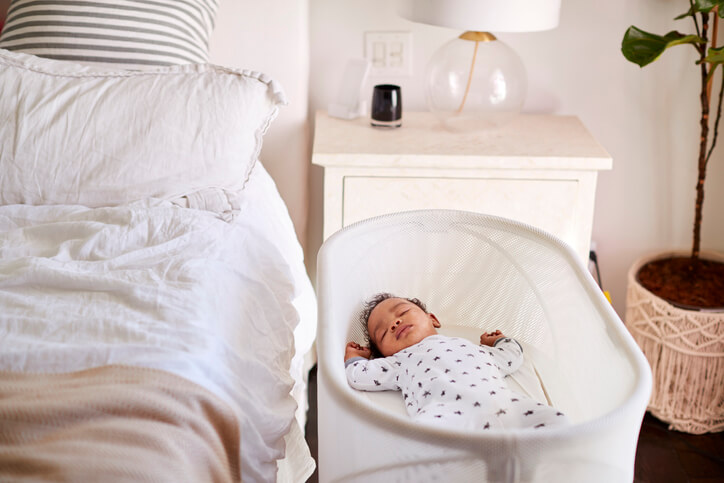
Bathing
Daily baby baths were once the rule, but no longer. Daily baths can dry out baby’s sensitive skin and cause irritation. Bathing one to three times per week is usually sufficient, in just one inch of lukewarm water (check the temperature with your elbow to make sure it’s warm enough but not too hot). Otherwise keep your grandbaby clean by washing his face and neck with a washcloth after each feeding and wiping the diaper area at each diaper change.
Burping
Tradition says that babies need to be burped after each feeding, but this isn’t always the case. Some babies need to burp a lot while others rarely do. If you hold the baby in a vertical position against a shoulder or in a carrier after feeding, a burp or gentle release of air will often happen naturally.
But if your grandchild seems uncomfortable after a feeding and a burp would help, the trick is to hold the baby upright in a way that puts pressure on his tummy. The two most common positions are high on your shoulder or sitting upright on your lap while bending the baby gently forward. Softly rub or pat his back with a burp cloth in position to catch any spit-up.
Sleeping
Only a few decades ago, parents were advised to put their babies to sleep on their tummies. But research in the 1990s suggested that the belly-down position could lead to an increased risk of Sudden Infant Death Syndrome, or SIDS, and parents were instead advised to put babies to sleep on their backs.
Today, babies are put to sleep on their backs — no exceptions. When the baby becomes strong enough to roll onto his stomach by himself, tummy-down sleeping is okay, but you should still put him to sleep on his back.
Other recommendations for safe sleep include:
- Using a crib or playpen with a snug fitting sheet
- Do not place pillows, quilts, bumper pads, or stuffed animals in the sleeping area
- No soft surfaces, such as an adult mattress, couch or chair
- Avoid soft or loose bedding. Use swaddle blankets, then sleep sacks rather than blankets.
Here’s more information on a safe sleep environment.
Swaddling
Swaddling is an age-old tradition that is coming back into favor. Meant only for the first few months of life, swaddling involves wrapping a baby snuggly in a swaddle blanket or special sleep sack that mimics the warmth and comfort of the womb. This helps the baby feel more calm and secure which can lead to longer stretches of sleep. Swaddling also binds the baby’s arms, which can prevent the startle reflex from waking the baby up.
Swaddling isn’t appropriate for every baby, though, including those who can roll over (which can start at about 2 months of age), are at a high risk of SIDS, or who are in hot environments where swaddling could cause them to become overheated.
Tummy Time
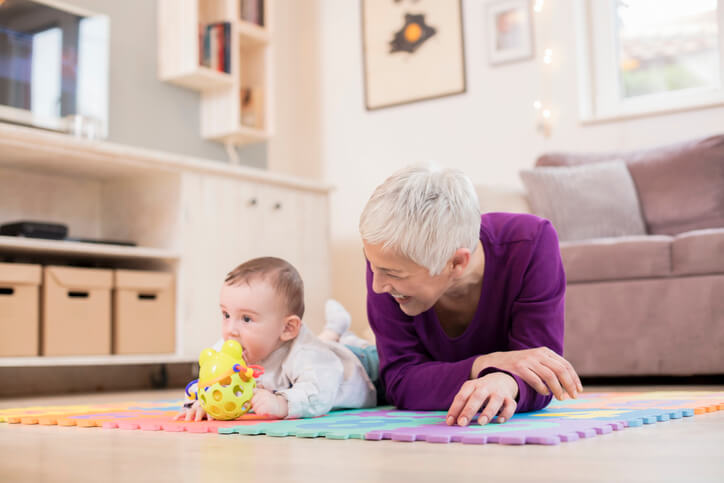
Babies may need to sleep on their backs, but in their waking hours, tummy time is essential to help them build their neck and shoulder muscles so they can begin to lift their head, turn over, and master later skills like sitting, crawling, and walking. Tummy time also helps prevent flat spots from forming on the back of baby’s skull.
Tummy time can begin on the baby’s first day of life, two or three times daily for three to five minutes, with longer, more frequent sessions as the baby gets older. Start by placing the baby belly-down on your chest or lap, or spread out a blanket on the floor with a few toys within reach.
Diapering
While some mothers may choose to use cloth diapers, disposable diapers are the norm, and they’ve come a long way since they were first introduced in the 1960s. Most now have an indicator strip that lets you know when they’re wet — and those little ruffles around the leg holes serve to prevent the diaper from leaking. Run your fingers along the edges of the ruffles to make them functional.
Also be sure to dilute baby wipes in the beginning. The solution can be caustic to a newborn’s delicate skin.
Dressing Appropriately for Weather
Whether the temperature outside is warm or cold, always dress your grandbaby in layers – as many as you require for yourself, plus one. Start with a sleeper onesie and then add as needed. Thin cotton clothes are preferred over flannel, even in winter, to prevent overheating and the risk of SIDS.
If you’re indoors, set the room temperature in a comfortable range for a lightly clothed adult. If you’re going outdoors in winter, make sure your baby is covered from head to toe, but remove winter clothes as soon as you come inside so baby doesn’t get too hot. In hot weather, a single layer of thin cotton clothing should be sufficient.
Car Seats
Car seats have been around for a long time, starting in the mid-20th century as a way to elevate youngsters so they could see out of car windows. Now they’re the law for safety reasons.
Infants must be in a rear-facing car seat until they are both one year old and weigh at least 20 pounds. After that, the National Highway Traffic Safety Administration (NHTSA) advises the use of a front-facing car seat or booster for all children until they are 4-feet, 9-inches tall, regardless of age and weight.
Feeding
Breast milk or formula is all infant babies need for nourishment and hydration. They shouldn’t drink water until they’re at least six months old, and even then, they should only get sips of water if they’re thirsty. Water can interfere with the body’s ability to absorb the nutrients in breast milk or formula, and can also make the baby feel full and not want to feed.
Juice is also a no-no until the baby is one year old, and even then quantities should be limited. Like water, juice fills up the baby’s tummy, and its high sugar content can cause stomach cramping and diarrhea.
By age 4 to 6 months, most babies are ready to begin eating cereal and solid food as a complement to breast milk or formula. Signs of readiness include weighing at least 13 pounds, and the baby’s ability to hold her head up, sit upright in a chair, and close her mouth around a spoon.
To minimize allergies, common food allergens — which include milk, eggs, peanuts, tree nuts, soy, seafood, wheat, sesame, and fish — should be introduced on a schedule. A varied diet that includes these foods one at a time and about two times weekly can help the baby maintain tolerance. Even with the greatest care, though, the baby may still develop a food allergy. Wheat, milk, and egg allergies are common, but often abandoned as the child gets older. Shellfish, fish and peanut allergies tend to be lifelong.
What Grandparents Should Know, Have, Get, or Take to Prepare for Their Grandchild
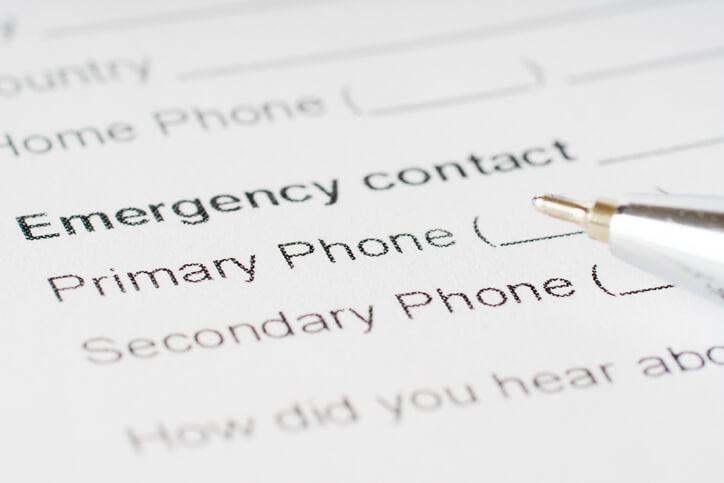
As a grandparent, you know the importance of being prepared for an emergency and of protecting your grandchild from the risk of illness. Take these steps to make sure you’re prepared:
- Know the location of nearest hospital with a pediatric emergency room.
- Have an approved car sear that is safely installed. Certified technicians will inspect your car seat installation free of charge. To find an inspector near you, visit the National Highway Traffic Safety Administration website.
- Get a flu shot. Many employers offer flu shots fee of charge or you can get them from your doctor or local pharmacy for $30–$40. Your insurance may pay for all or a portion of the cost.
- A Tdap shot is recommended to protect you (and your grandchild) against tetanus, diphtheria, and pertussis (a.k.a. whooping cough). You should get a Tdap booster at 10-year intervals if you will be in close contact with an infant younger than 12 months. Costs range from $25–$50, and may be covered by your insurance.
- Arrange with your grandbaby’s parents to get a notarized authorization for medical consent. This will allow you to order medical services if the parents are away and you are in charge.
- Take a baby CPR class so you can respond if your grandchild has a cardiac or breathing emergency. Adult CPR classes are priced around $25, slightly more if you want to get certified.
Will You Be Babysitting in Your Home? Have These Things.
As you look forward to baby visits and babysitting opportunities, you’re going to need some gear. These are some of the top products you’ll want and need when your grandchild comes to call:
- Lightweight stroller
- Portable crib/play pen where your grandbaby can safely sleep and play
- Gym mat with activities attached that baby can look at and play with as she gets older
- Folding highchair
- Mini bath tub to hold the baby in place during bath time
- Changing table pad that attaches to the top of a dresser
- Approved car seat if you’ll be driving the baby around a lot
- Feeding set (with bowl, utensils), spoons, a sippy cup, and toys, books and games for when the child gets older
Eight Items Not Needed as a Grandparent
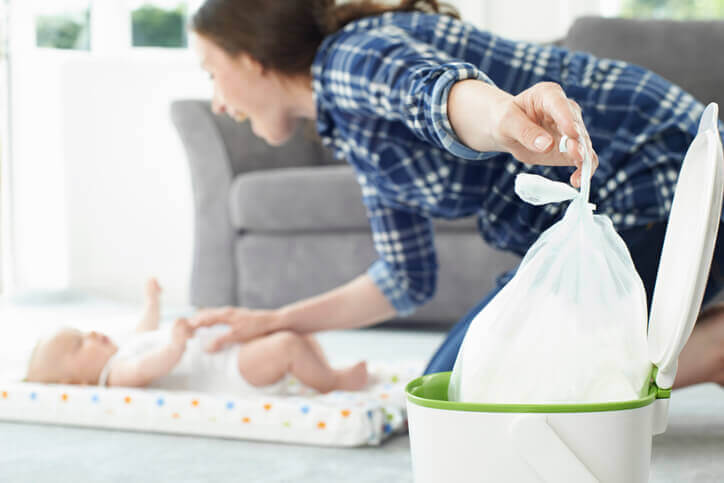
Baby care and clothing comprises a huge commercial industry in the United States and include a dizzying array of products. Some are required, others helpful and convenient, and still others unnecessary and even a little indulgent. When contemplating what you should buy, you can cross these items off your new grandbaby list:
- Bedding for the baby’s crib. Bumper pads, baby blankets, pillows and dust ruffle are a risk factor for SIDS. Use only sheet that fits snugly over the mattress.
- Bassinet. The baby will quickly outgrow it.
- Changing table. They take up room and can be costly. A changing area on a dresser or the floor can be safer while optimizing physical space.
- Special diaper pail that requires special bags and cartridges. A small trashcan with a lid will serve you well and cost a lot less.
- Infant shoes and socks. They rarely stay on, and infant shoes can be uncomfortable for the baby. Footed pajamas are a better way to keep baby’s feet covered and warm.
- Expensive clothing for newborns. Your grandbaby will quickly outgrow clothing sized for 0 to 3 months. Inexpensive onesies and sleepers are all that’s needed for the first few months.
- Skin care products. A baby’s skin is sensitive; avoid products that contain dyes, fragrances, and chemicals that can irritate the baby’s skin. Phthalates and parabens can be especially harmful to babies.
- Baby powder. Talc or cornstarch powders can cause the baby breathing problems.
Approaching Your Role as a Grandparent
Becoming a grandparent can both enrich your life and present new relationship challenges with your children. Whatever your level of involvement as grandparent, these basic guidelines can help you cultivate strong relationships that have lasting positive effects with all members of the family:
- Respect your children’s parenting styles and methods. Offer advice without dictating or undermining the parents’ authority in front of their children. Your children will appreciate your support and value your sound counsel more if they don’t feel like you are interfering.
- Help out in the caregiving of your grandchildren. Have a discussion with your children beforehand if you’re unsure of your role or their expectations.
- Share your legacy. Pass on family stories, impart values, and teach your grandchildren the traditional principles of hard work, honesty and integrity.
- Take time off for yourself. An active lifestyle of your own will put you in a better position to be there for your children and grandchildren.
- Support your children in their parenting journey. If asked, help the parents sort through all the advice and tips that can overwhelm them as they try to do their best.
Understanding the intricacies of modern-day infant care will give you a good start in your new relationship with your adult child and new grandbaby. Be open, give lots of hugs and kisses, and most of all, enjoy this new time in your life.
Looking for more amazing grandparenting tips?
Whether it’s to chuckle over the various versions of grandparent names, from traditional to the more exotic or learn about how to shine as a custodial grandparent, the Extra Mile has it!


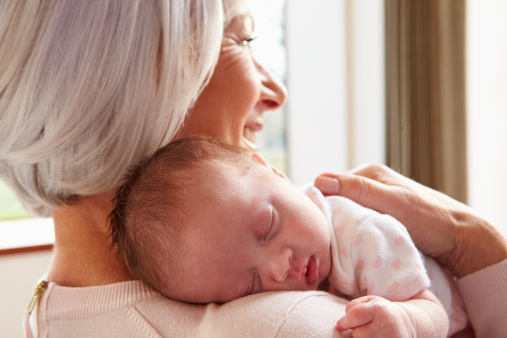


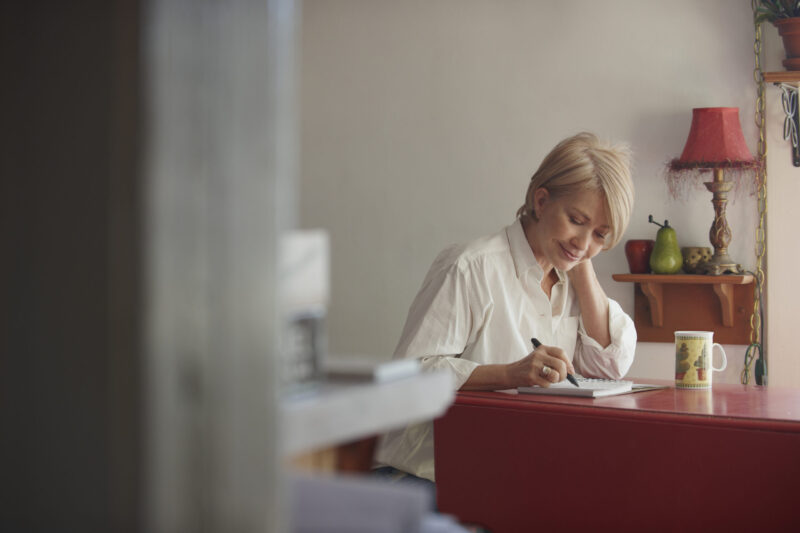


Thanks for this information. It’s helpful for grandparents to get a refresher article with a variety of information that you provided!
Well done!
I agree with you
Thank you very much for the article and updates on some changes grandparents should know while caring for babies and young children. The best practices, grandparents should be aware and use was very helpful and interesting. There is nothing like starting a task and having a plan that you can follow, for success.
It is always good to know how to control or eliminate the risk.
Be Blessed
John
John- thank you for your kind feedback!
Very helpful, thank you
Thanks for reading, Barbara!